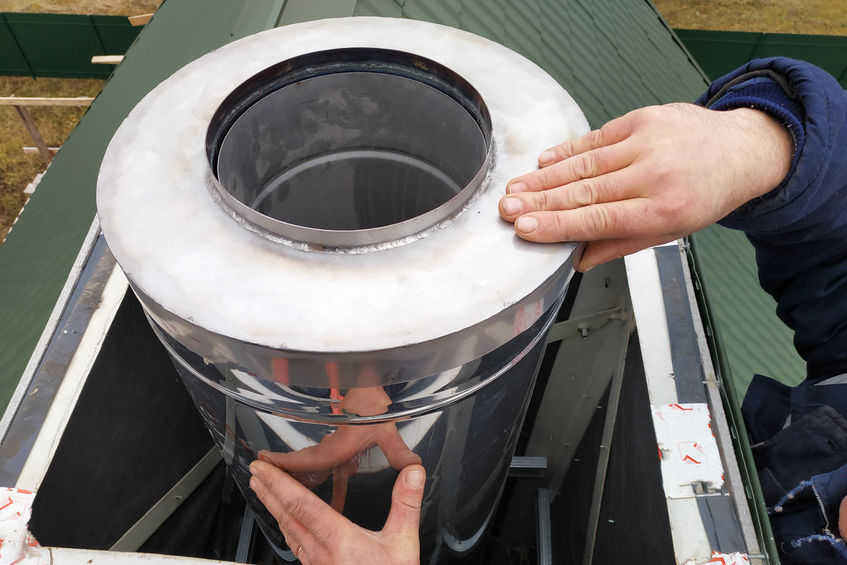Why Does the Angle of Your Chimney’s Exhaust Pipe Matter?

Factors to Consider Before Installing a Bend in Your Chimney
- Slope
A chimney’s exhaust pipe can be sloped but this should only be done if it is really necessary to do so. The flue’s angle should be directly perpendicular to ground level. However, it would be much better if it is possible to come off this vertical by about 30 degrees. Therefore, the exhaust pipe can be installed at around 60 degrees from the ground.
- Starting Point
Apart from the flue’s angle, another important point you want to consider is the starting point of the exhaust pipe. This is in regards to the proximity to the smoke chamber, which is an important factor to consider. The opening should be about 8 inches from the smoke chamber to ensure maximum performance and efficiency. One thing you want to consider when installing a chimney’s exhaust pipe is to look upward through the opening or downward from the top. When you do this, you should be able to see the joints. If this is not the case, your chimney will not be as effective as it should be. In fact, it could make gases not flow as required.
- Building Codes
Before thinking about bends in the chimney’s exhaust, you want to check with local building codes on this matter. Doing this will help you know the kind of setup allowed by the authorities in your area. Although some of the mentioned standards are usually allowed in most states, your local authority could have extra information regarding the types of bends they require. Therefore, it is important to make sure you check with them so you can consider their stipulations when thinking about having a bend down your chimney’s exhaust pipe.
Disadvantages of Having a Bend in Your Chimney’s Exhaust Pipe
As earlier mentioned, a bend in the chimney not only affects the inflow and outflow of gases but also makes the chimney quite hard to clean because soot can collect at the offset points. A bend also makes it hard for a maintenance person to see through the chimney to identify any issues. In addition to this, it is quite expensive to have a chimney that has bends and offsets because such a design takes time and expertise to build.
Acceptable Angles for Chimney Bends
If you decide to go with a chimney that has a bend, it is good to note that some angles are better than others in terms of efficiency. For instance, an angle of 30 degrees is better than 45 degrees because it is easier to accommodate. It would even be better to build two slopes of 15 degrees each to meet your offset requirements.
The overall design for your chimney’s exhaust pipe plays an important role because when done correctly, it helps ensure the safety of your home’s inhabitants. The setup for the pipe depends on the size of the fireplace and the openings if any. The pipe’s design normally requires an exhaust pipe that is vertical to the ground. However, at times it might be important to bend the flue to accommodate the home’s architectural design.
